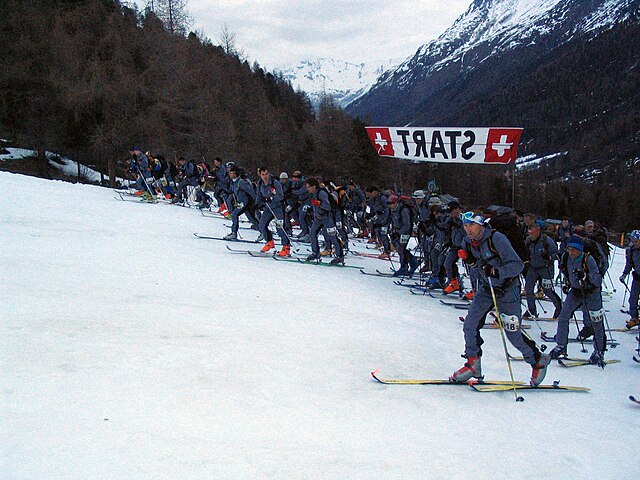Ski mountaineering is a skiing discipline that involves climbing mountains either on skis or carrying them, depending on the steepness of the ascent, and then descending on skis. There are two major categories of equipment used, free-heel Telemark skis and skis based on Alpine skis, where the heel is free for ascents, but is fixed during descent. The discipline may be practiced recreationally or as a competitive sport.
Skiing on the Columbia Icefield
Start at Arolla, Patrouille des Glaciers 2006
Ski mountaineering descent on a Norwegian peak.
Mt. Alberta from Columbia Icefield
Backcountry skiing (US), also called off-piste (Europe), alpine touring, freeriding or out-of-area, is skiing in the backcountry on unmarked or unpatrolled areas either inside or outside a ski resort's boundaries. This contrasts with alpine skiing, which is typically done on groomed trails benefiting from a ski patrol. Unlike ski touring, backcountry skiing can – and often does – include the use of ski lifts including snowcats and helicopters. Recent improvements in equipment have increased the popularity of the sport. As the sport does confront the individual practicing it with the dangers of natural, unprepared alpine terrain like avalanches, it is generally recommended to carry standard safety equipment and to learn beforehand how to behave safely under such conditions.
A set of backcountry ski runs in the Battle Range of the Canadian Rocky Mountains. Notice a minor avalanche has occurred at the right of frame.
Backcountry skiers skinning up in British Columbia
Backcountry skiers skinning up in Norway
Snowboarding in deep powder is technically easier than skiing and much faster to learn. One reason is that there is naturally no requirement to keep the skis parallel, one of the main difficulties when skiing in deep snow.








